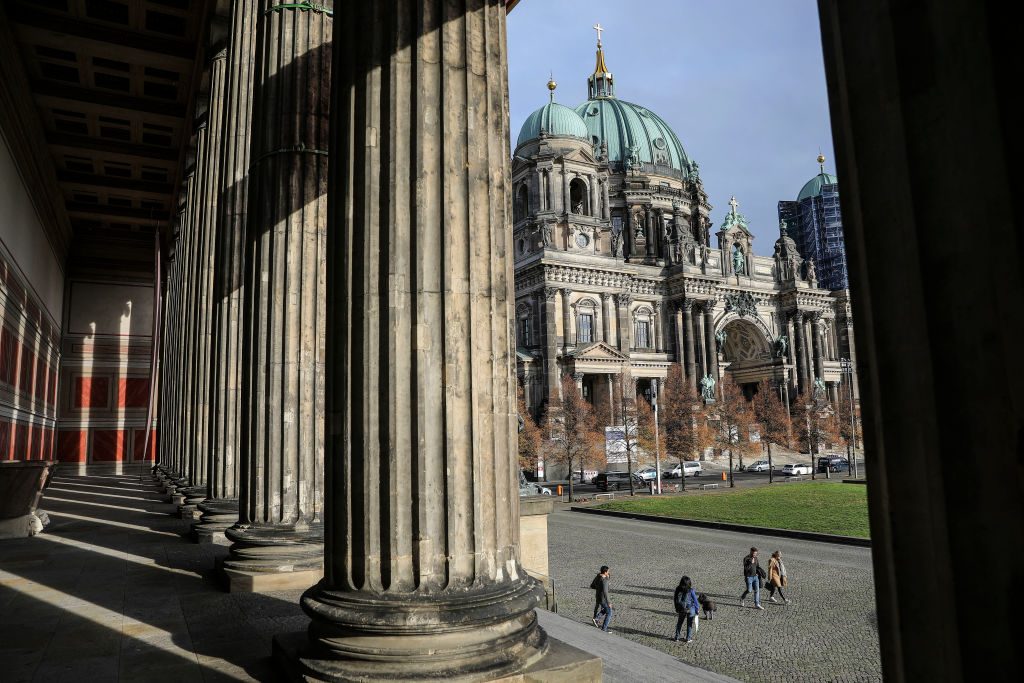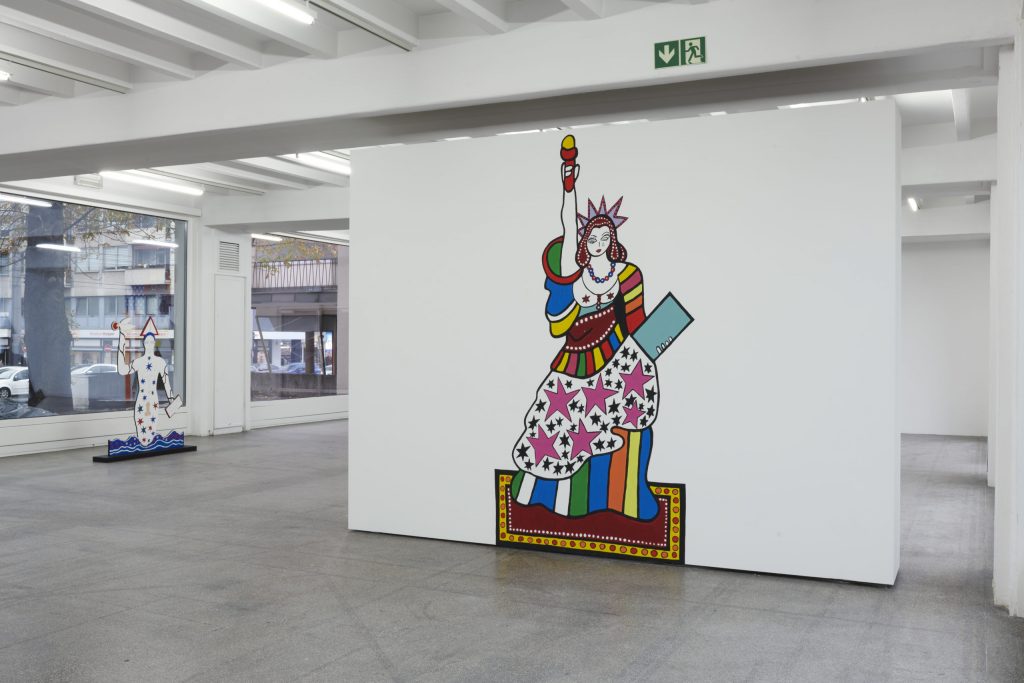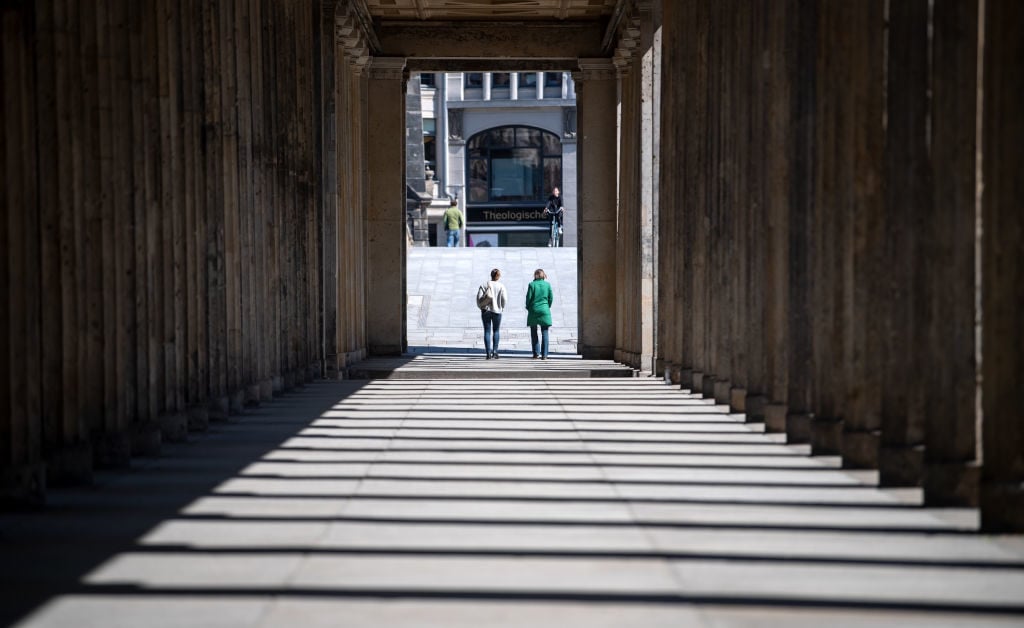Art World
German Museum Directors Are Pushing Back Against the Country’s ‘Incomprehensible’ Second Shutdown
Commercial galleries, however, are allowed to remain open.

Commercial galleries, however, are allowed to remain open.

Kate Brown

Director Nikola Dietrich and her team at Kölnischer Kunstverein in Cologne were cautiously optimistic ahead of the opening last week of “The Köln Concert,” a two-person exhibition by artists Dorothy Iannone and Juliette Blightman. By the weekend, however, it became clear that, despite a year of planning, the show would have to be put on hold just two days after it opened due to Germany’s new lockdown measures, which took effect today.
“Closing the exhibition again, as well as the uncertainties about how to proceed and what the future may look like, are all very stressful for our team,” says Dietrich.
Germany’s cultural venues are fatigued as they readjust for the second time to a lockdown that includes museums and cultural venues. The country recorded 14,771 new cases on Sunday, yet some in the cultural sector have lost patience with the closures, the latest of which is expected to last through the month of November.
In an open letter addressed the federal government, 36 museum directors denounced the move. “[T]he cultural sector is once again extremely affected, and with it the museums, which will be closed for several weeks for the second time this year,” it read. “For all understanding of the challenges that Corona imposes on all of us, we believe that this is a false decision.”
Signatories to the letter include Ulrike Groos, director of Kunstmuseum Stuttgart; Stephan Berg, director of the Kunstmuseum Bonn; and Peter Gorschlüter, director of Museum Folkwang in Essen. “It is incomprehensible to us why it is possible to keep DIY stores, car dealerships, and other shops open, but museums, which have the same or more spacious areas for corona-friendly public access, are closed,” they wrote.

Kölnischer Kunstverein’s “The Köln Concernt” with Dorothy Iannone and Juliette Blightman. Photo: Mareike Tocha.
The directors are not the only museum workers expressing concern with the new rule. The International Council of Museums Germany also released a statement on the November measures: “The renewed lockdown hits [museums] unexpectedly, hard and unjustifiably,” wrote the council’s head, Beate Reifenscheid, in a statement. She called the closure of museums “the wrong signal in a time of crisis.”
Last week, Belgium, Germany, and France announced new month-long lockdowns to push back starkly rising coronavirus case numbers. Italy has installed a curfew and Spain declared a state of emergency. In the UK today, prime minister Boris Johnson announced a new lockdown that would begin Thursday and run until December 2.
As part of her measures, Chancellor Angela Merkel allows schools, daycares, shops, and libraries to remain open for the next month. Restaurants, bars, opera houses, theaters, and museums of all sizes must close. This affects the cultural industry in Germany, which employs 1.5 million workers and generates €100 billion annually.

Two women walk through a colonnade in front of the Alte Nationalgalerie and the Neues Museum on Museum Island. Photo: Bernd von Jutrczenka/picture alliance via Getty Images.
In a joint statement, Germany’s state culture ministers expressed understanding and support for the need to control case numbers, but urged the federal government to provide support to the field and its many self-employed workers. Federal culture minister Monika Grütters echoed this call, saying the closures “are a real catastrophe,” and that she was “worried about culture,” in a statement to the press on Friday. She also appealed for compensation to cultural institutions as well as “a tailor-made support system” for self-employed workers.
Help is on the way, according to the government, which has promised to provide assistance of up to 75 percent of sales lost for those affected by the closure. Up to €10 billion is available for this purpose.
There is one silver lining to the new lockdown. Germany’s approximately 700 commercial art galleries, which have been battered by the pandemic this year, can remain open. Galleries, technically, qualify as retail shops, and so they are allowed to remain open in accordance with the government’s rules.
“While it’s saddening that museums and other art institutions cannot be open for public visits at this time, we are extremely happy that our first solo exhibition with Andrew Grassie, which opened on Sunday, will remain accessible to the public throughout all of November,” gallerist Esther Schipper tells Artnet News.
And at the Kölnischer Kunstverein, Dietrich says that the show will be at least somewhat viewable through the venue’s front windows. “We have exhibited paintings and sculptures so that they can also be accessed from outside,” says Dietrich. “Surely this is by no means ideal, but it does at least allow some kind of access.”